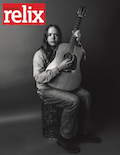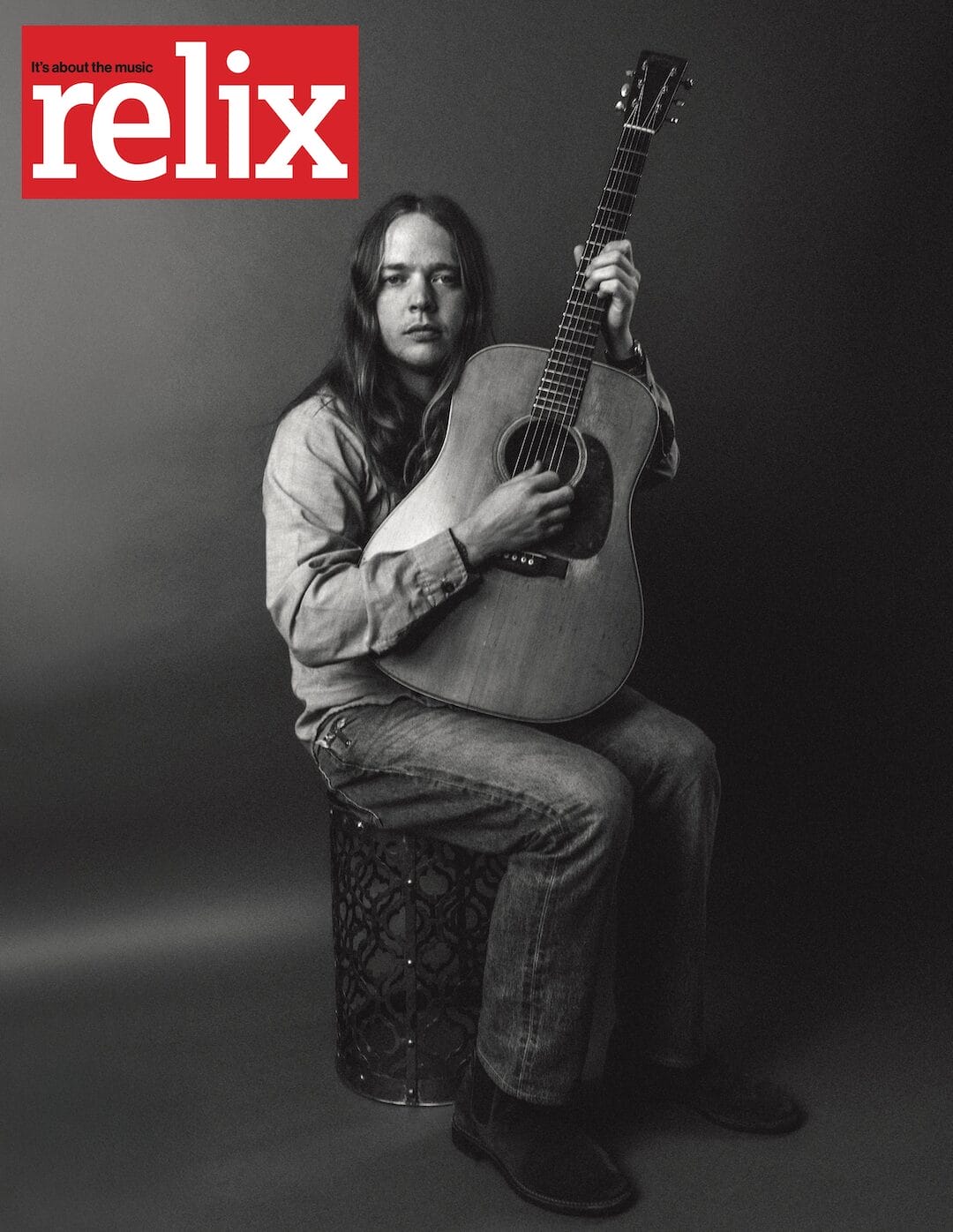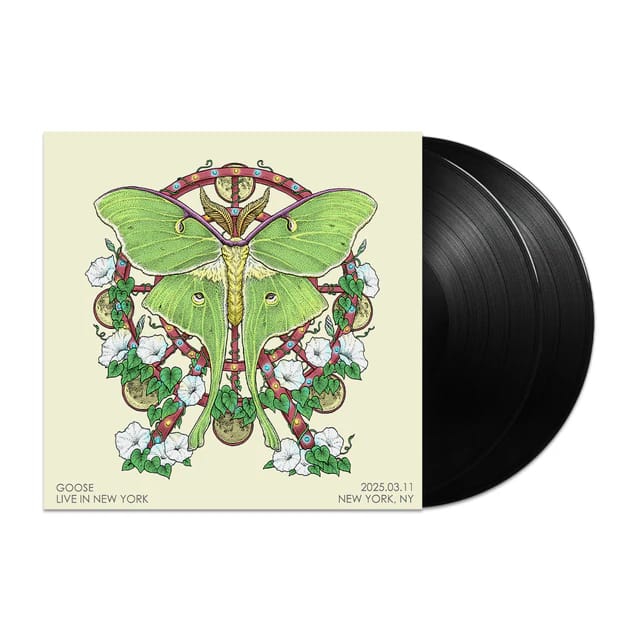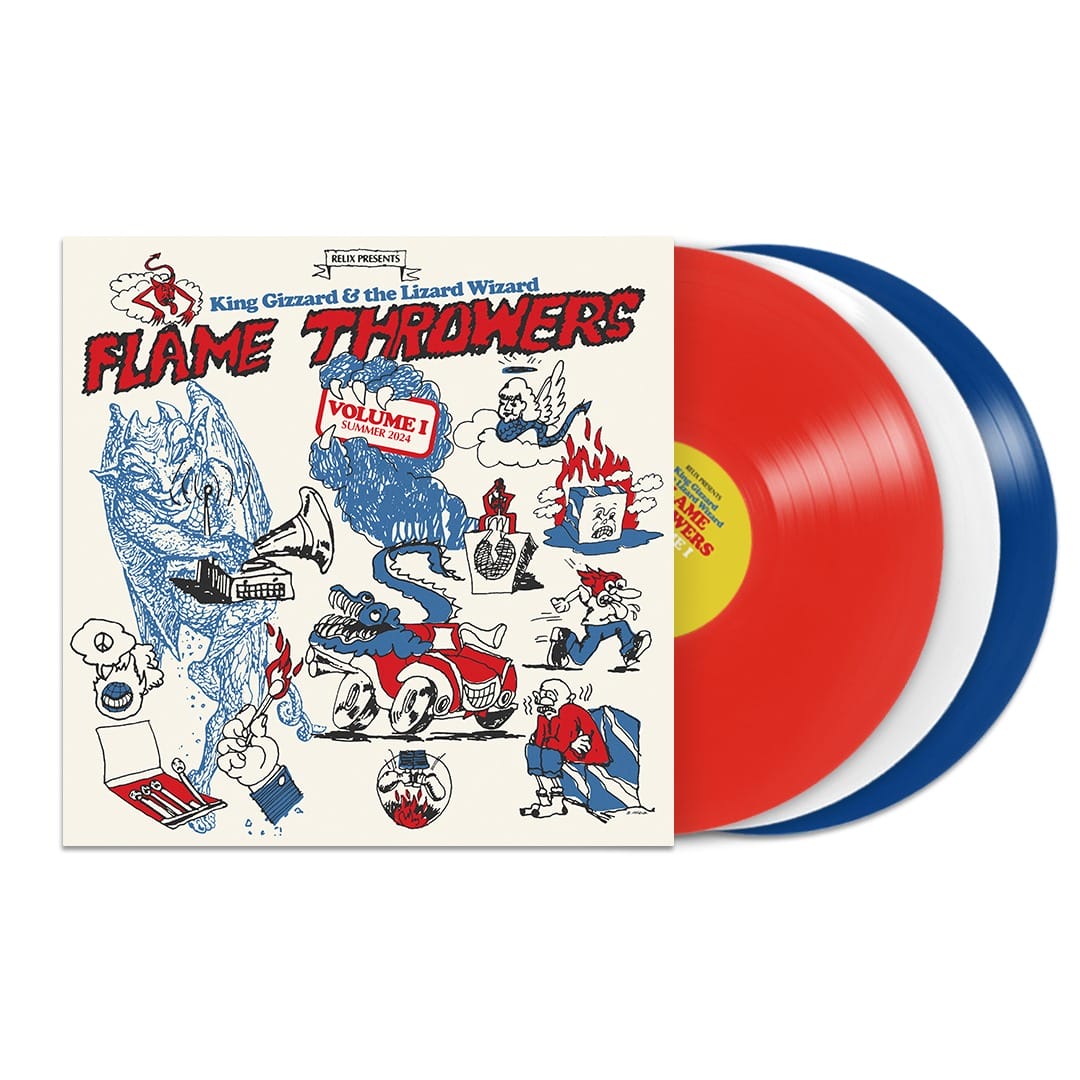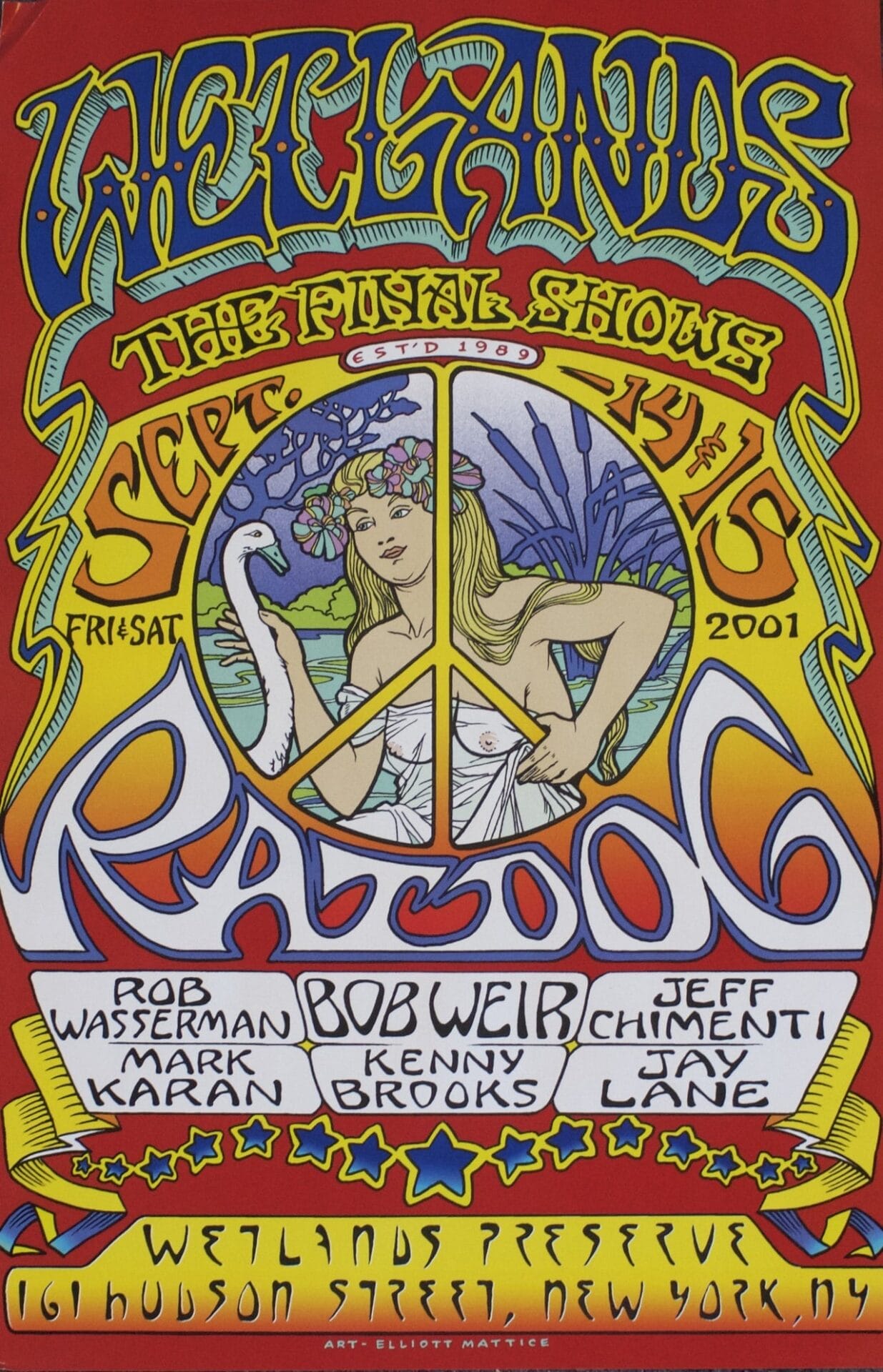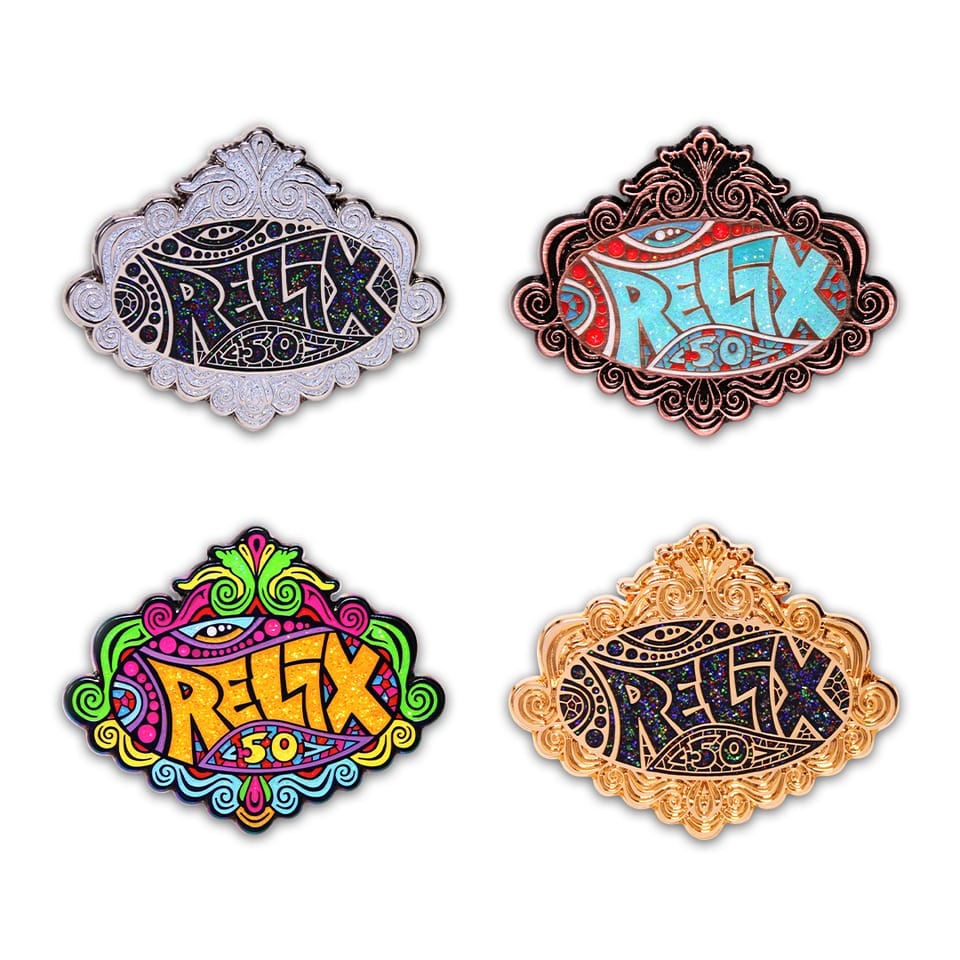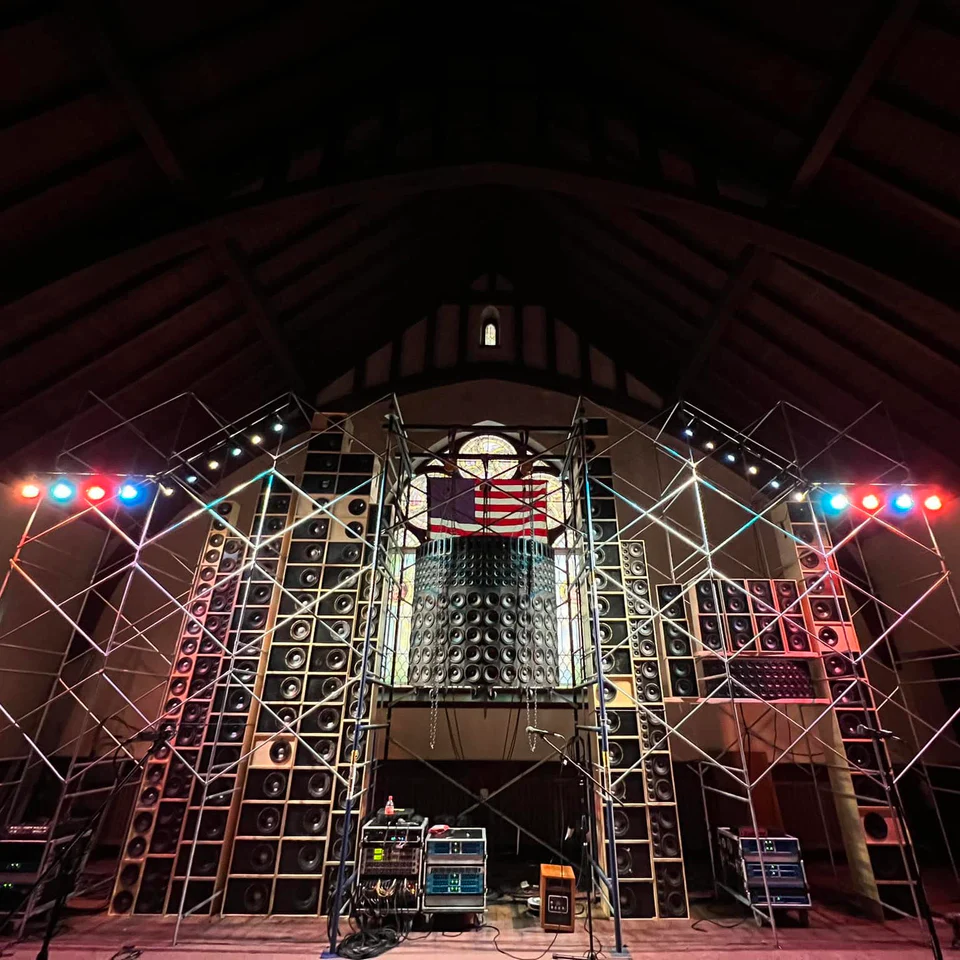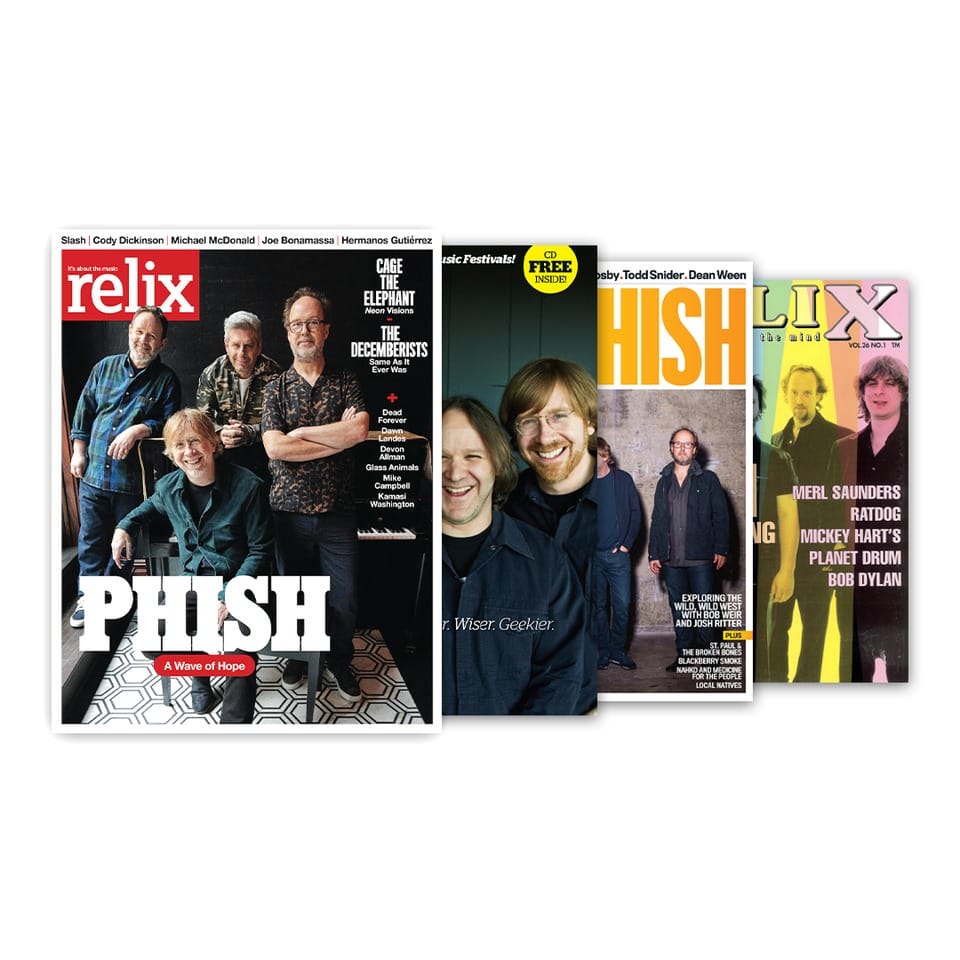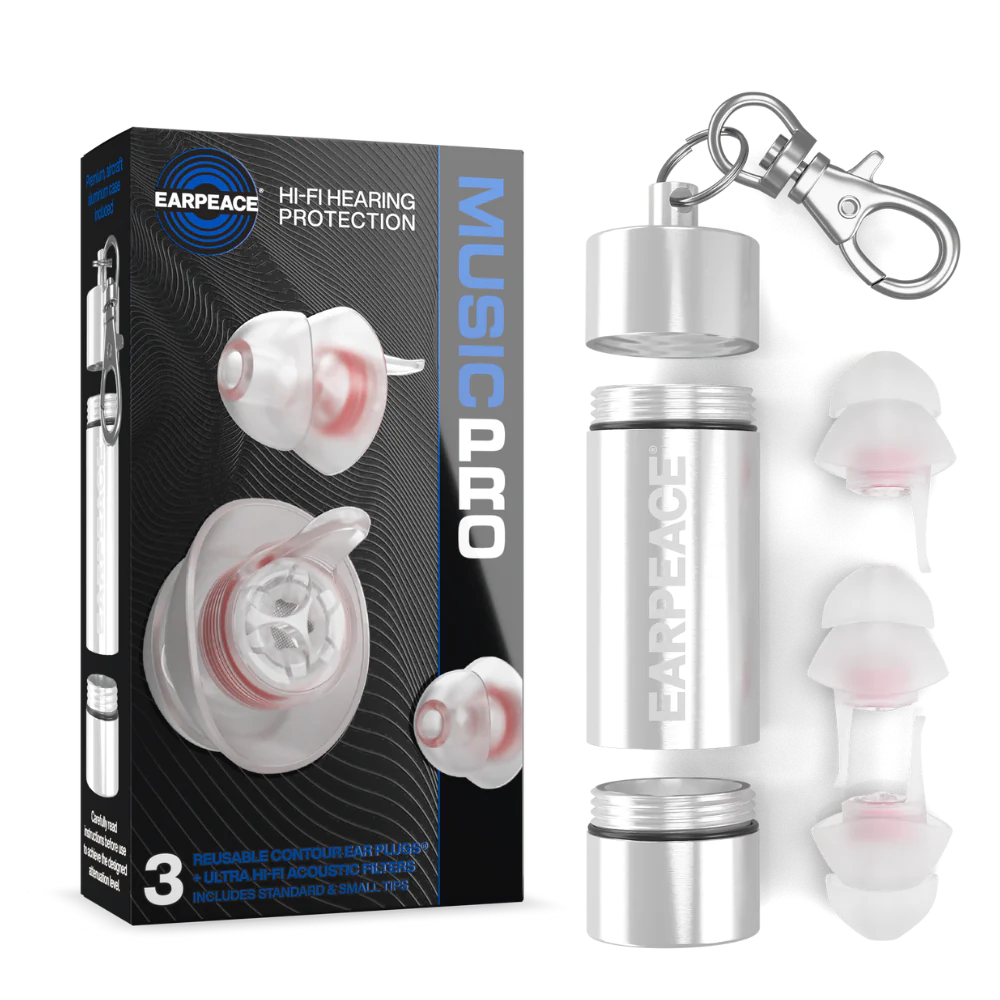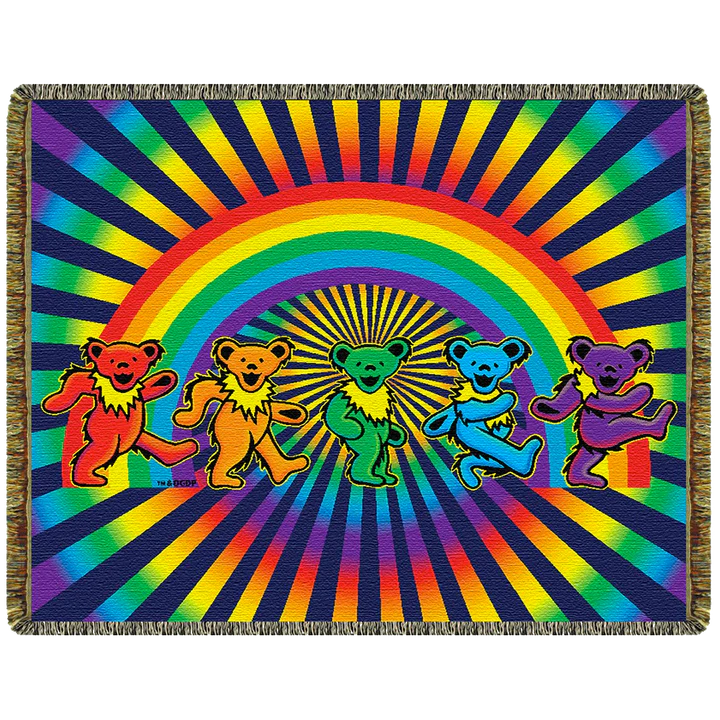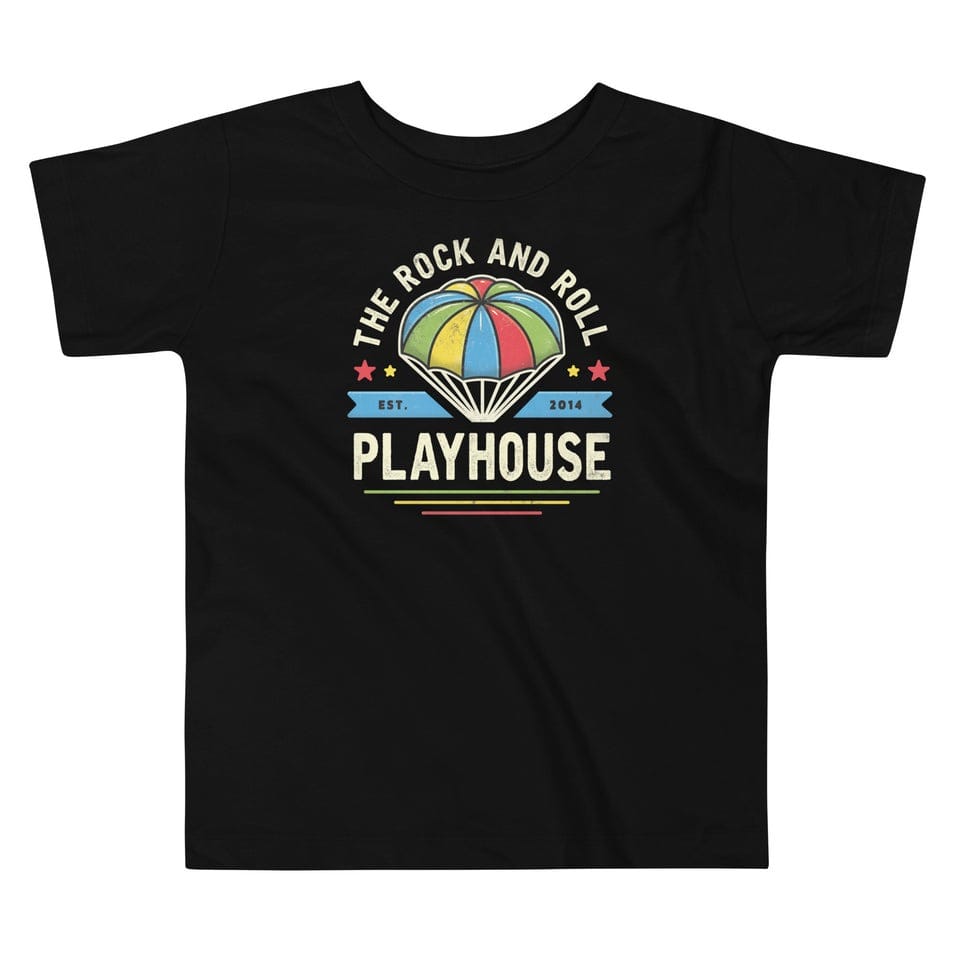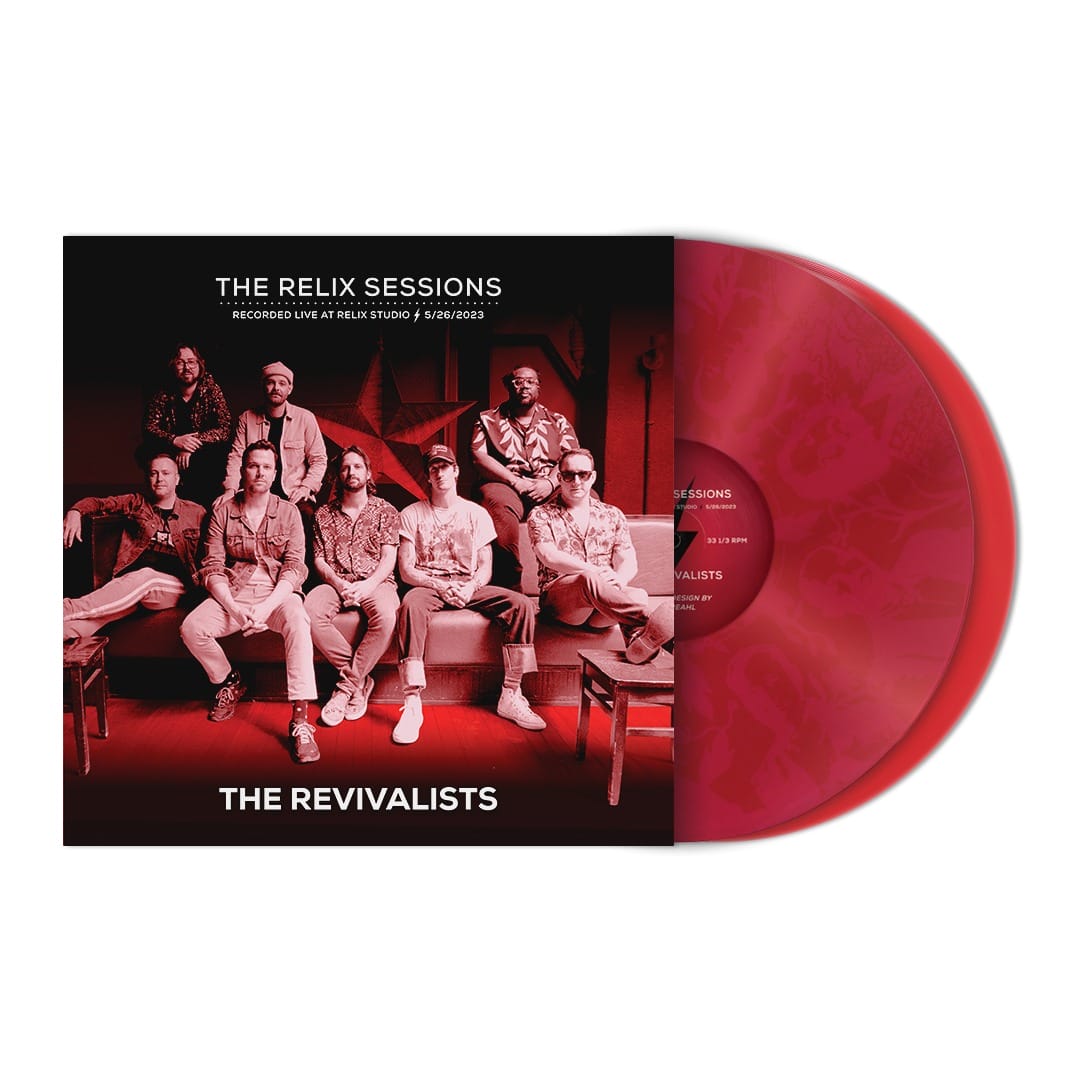The National: Chasing A Mystery
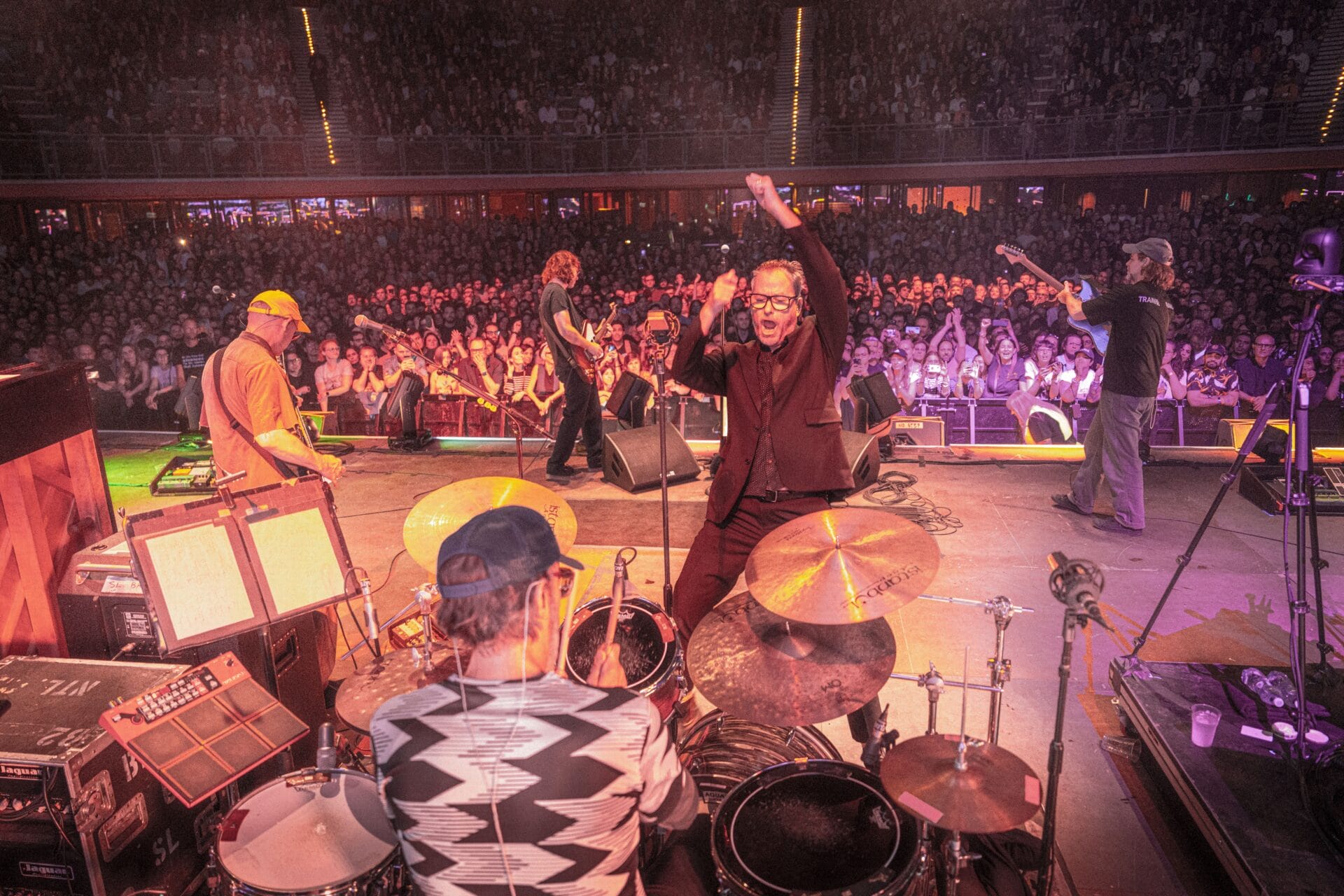
Photo: Graham MacIndoe
***
The first time Peter Katis experienced The National live he didn’t exactly see the future of rock-and-roll.
“It was pretty early on, at Maxwell’s in Hoboken, N.J., and there were five people in the audience—and that included me and my brand-new girlfriend, who’s now my wife,” says the producer, who would go on to play a pivotal role in shaping The National’s breakthrough records in the 2000s. “I had just met the guys, and it was a little rough—[frontman Matt Berninger] was still really into screaming and stuff, and the band was still figuring things out.”
At the time of that club gig, Katis was mixing the New York-bred outfit’s sophomore album, 2003’s Sad Songs for Dirty Lovers, beginning a fruitful partnership that would go on to include work on 2005’s Alligator and 2007’s Boxer, as well as several other projects, before guitarist Aaron Dessner assumed a larger in-house production role. However, he did see some early signs of potential.
“When we left, my girlfriend said, ‘That drummer is really good,’ and I was like, ‘Yes, he is,’” Katis says of Bryan Devendorf. “Bryan had it dialed in early on—he’s the most pro.”
Of course, The National continued to refine their show and have long since emerged as one of the most revered live acts to come of age on the early 21st century New York indie-scene—nurturing a passionate, dedicated fanbase along the way. Katis continued to see the ascendent band—including a run of gigs at New York’s Mercury Lounge, where they incubated their sound—and also sat at the helm for records by contemporaries like Inteprol and Oneida. (He even had the group play at his wedding—a picture of the jacket-clad musicians in action graces the cover of Boxer.) And now, over two decades since that night in Hoboken, The National have brought Katis in to mix what is being billed as their “definitive live document,” the new concert souvenir Rome.
The 21-track, two-LP set was captured at Rome’s Cavea of the Auditorium Parco Della Musica Ennio Morricone on June 3, 2024, during a marathon run ostensibly supporting 2023’s sibling releases First Two Pages of Frankenstein and Laugh Track. The set includes material from both of those LPs as well as a mix of greatest hits and live rarities, like opener “Runaway,” “Lemonworld,” “The Geese of Beverly Road,” “Lit Up” and a segue from Trouble Will Find Me’s “Humiliation” into the Sad Songs for Dirty Lovers favorite “Murder Me Rachael.”
“We didn’t intend to record a live album that night,” says bassist Scott Devendorf, an avid live-music fan who helped steer Rome’s direction. “We record all the shows on the tour. At one point, we were considering making a compilation live album. But we really liked this show. Listening back to it, it had a great energy, and we remember the night being fun, too. We thought the versions we played were good enough to do the songs justice. It was a good tour overall, but for some reason, those shows in Italy, particularly this one in Rome, was really great.”
Though all five members of The National hail from Cincinnati and the combo coalesced in New York, the quintet made waves in Europe early on and started headlining larger and more esteemed establishments overseas before they truly found their footing in several markets back home.
“We’ve played that venue at least once before, and the first time we played, it felt like a special place,” Scott says of the space, which has a capacity of 2,707. “It has really great acoustics. It’s outdoors—we’re always there in the summer and the weather was great. It had a nice evening vibe—big but not scary or an arena. It’s just so beautiful. It’s set in this park in Rome, and it’s an architectural masterpiece of sorts. There’s other venues within the park, and they have more orchestral stuff there.”
Since the band, which also includes guitarist Bryce Dessner, hadn’t singled out a specific show to release when they landed in Rome, the Connecticut-based Katis didn’t make the trek to Italy himself, and instead received the files to work on after the fact. He notes that there are a variety of ways musicians release live recordings in this day in age, ranging from the beloved “warts-and-all” approach popularized by the Grateful Dead’s Dick’s Picks series to some more manicured live albums, where—though the drums still may be from the show—the vocals and select other instruments have been rerecorded in a more controlled studio setting.
“Going into this, the plan was not to mess with things,” Katis says. “There is no overdubbing, and we just fixed a few things here or there. The cleanup was a little more tricky, with the subjective things. You get a session with several dozen tracks—do you leave all the mics on all the time? There’s not a straightforward answer to that question, and one of the things I dealt with was how much ambient noise I should take out.”
He notes that there were times when the crowd would swell and cheer at a certain part of a song and that he pushed “for keeping it pretty present because it really added excitement—just to hear the audience’s genuine emotion.”
A key goal, he adds, was not to mute the energy.
“Maybe it’s a little crazier sounding, a little noisier, but it feels live because of that,” Katis says. “You can tell when Matt goes into the crowd because, again, they are dudes yelling right into the mic.”
“I like that about Rome because it does feel live and I saw all this happen,” Scott says. “It feels real. Sometimes there’s some crazy singing. There’s also just crazy sounds that are captured via that mic—this wind tunnel of screaming and noise.”
Given that The National zeroed in on a single show to release, they decided not to tweak the gig’s running order. And while the band also made a more accessible, affordable and slightly truncated version of the record available, both Scott and Katis are happy that Rome documents the ebb and-flow of the night—deep into the tour, when the pressure seemed to be off.
“I imagine, with all the shows you play, people don’t get very nervous, but if you haven’t played in a year and a half, anyone would get scared,” Katis says to Scott, while discussing Rome on Zoom. “And that’s a different kind of fun.”
The producer describes his work on Rome as “the most hands-off record by The National I’ve ever been part of.” He takes a beat, before adding with a laugh, “Really, I just talked to Scott. We were the only people who worked on it, and it was so smooth. I still have Matt’s recall notes somewhere because they were funny. They were absurd—‘I want 5% more vocal, 15% less guitar.’”
***
In December 2019, The National wrapped up a multi-week European tour in Portugal—and it turned out to be their last performance together until May 2022. They didn’t intend for the break to be that long, but a lot of life happened during that almost three-year period, including COVID, Berninger’s struggles with writer’s block and Aaron Dessner’s rising profile as a producer and songwriter for pop musicians like Taylor Swift and Gracie Abrams. When the ensemble did regroup in 2022, they were armed with a few new songs that they were already trying out. However, they initially largely stuck with a select pool of songs as they got their sea legs back. Scott mentions a gig at Port Chester, N.Y.’s Capitol Theatre in September 2022, when they felt comfortable enough to debut the new original “Eucalyptus” in a pressure free environment and let loose before a big festival gig at Bridgeport, Conn.’s Sound on Sound. But he also notes that there were some trial-by-fire moments, like when they played a massive stage at Spain’s Primavera Sound 2022 just a few days into their first tour since 2019.
“That was after COVID, and Matt was still getting his legs back and the whole thing,” Scott says. “We were just like, ‘Oh, my God, this is high pressure.’”
However, over time, they started mining their back catalog and switching up their setlists nightly. And by the time that The National brought their 2024 run to a close, they had worked through a staggering 92 different tunes on the road, some of which had long fallen out of rotation.
“We have done that over the years, but more so post COVID, with the return to touring,” Scott says. “The impetus was that we really felt like we had a bunch of new songs with the two new records, but also there was a desire from fans and these requests like, ‘Can you please play this?’ It just makes it more exciting for us, though it’s nerve-racking. Also, all summer we did these pre-show VIP sets where people would just yell out songs and we would play them, which was a mixed bag but fun.”
A longtime Deadhead who has toured and recorded with Bob Weir and DJs the Dead’s music with Conrad Doucette, Scott, in particular, saw the need for variety on the road.
“The general thinking within the band was like, ‘We have all these songs now— there’s 10-plus records, so we don’t want to just be playing the same set every night,’ which we have spent time doing as well,” he says. “We wanted to just explore it and try to reinvigorate some stuff that was maybe quieter in the past—give it another go. The band was playing well, so it’s like, ‘Let’s try this or that.’ So it was a combination of fan requests and band interest. There’s an internal desire to try that approach from our love of bands that do that.”
During their rise through the ranks, The National have issued a few official live recordings, including a complete reimagining of Boxer captured in Brussels and a Mike Millard-inspired cassette release dubbed Juicy Sonic Magic. Yet, they have never released a traditional live album.
“I was on the periphery of those kind of bands [who had tape-trading cultures], but Bryan and Scott would always talk about shows from certain dates and this and that,” Berninger, who played a key role in realizing the official bootleg Juicy Sonic Magic, told Relix around its release. “It’s fascinating—it’s like collecting baseball cards or something. It’s not all about just trying to remember certain events and shows; although, there is real magic when you find an incredible performance where a band did a song in a way that they never did again. With bands who do hundreds of shows in one year, sometimes thousands over a career, to go through all of those shows and try to find the best version of a song is really satisfying. It’s like Bruce Springsteen’s ‘Born to Run’—‘What is that one where [that moment] happened?’ It’s like looking for fossils.”
Without getting too nitpicky while thinking about what appearance might properly represent their recent run, Scott says he surrendered to the flow of the evening as he was listening back to their 2024 Rome show. “It was about having one show with a lot of good songs in it, but it wasn’t an unusual set—we could have picked the night before or the night after. We have played, for example, ‘The Geese of Beverly Road’ a few times over the tour, but it wasn’t played every night. I think that also adds to the sort of spiritual energy of it— we’re excited to do it or nervous or both.”
“That’s what I love about rock-and-roll— in a sports game, you get a lot of people who are angry together or maybe they all come happy, but half of them leave angry. But at a rock show, everybody’s happy—unless you’re dragged to see a show you don’t want to see—because everybody else is there to be happy,” Berninger adds. “So you feel that. You feel that in the room. When you walk out on stage, there’s something. And it’s not just the sound of people screaming. Yeah, you can hear it, but also, if I was deaf and blind and I walked out on the stage, I bet I would feel a sense of thick happiness in the room.”
Katis—who clocked in a number of key National shows over the years, especially in the Northeast—believes that the band’s slow-and-steady rise has been a crucial part of their continued success.
“The other band I worked with a lot when we first met was Interpol, who had sort of this meteoric rise and then ups and downs,” Katis says. “But with The National, there’s no dip in the trajectory. I say this as a compliment, but their success defies logic as an art-rock indie band.”
“It definitely helps to not be great when you start,” Scott quips. “Maybe it’s great to be great when you start, but the way that we always approached it was organic and as fans of music, too. At the beginning, there was not this super ambition to make it big. Everything that we liked about music was sort of low key. There’s something to be said for that grassroots thing—go out and tour everywhere and play shows for people who don’t know who you are. And we did tons of that from 2000 to 2010 or whatever. Our first 10 years or so were pretty slow.”
Katis thinks back to a gig in 2011 when he saw the band share a bill with pioneering indie-art band Yo La Tengo in Boston. “That was a real tipping point in my mind,” he says of the show, which was on the heals of the previous year’s High Violet. “We were racing up there to get to the show before they hit the stage, and the set times Aaron gave me didn’t make any sense. Then I got there and I figured it out—‘Oh, my God, Yo La Tengo is opening for them.’”
“At the time, that blew my mind—it blows my mind still,” Scott adds. “We had done one of the Hanukkah shows with them—they’re our heroes. So that was weird.”
***
The National’s Post-COVID comeback run came to a natural conclusion in late 2024, shortly before Rome was released. As is expected given their years together and interests outside the band, Scott says the group will take a break from the road, before likely regrouping in the next year or so. (One of his early 2025 appearances included DJing New York’s Brooklyn Bowl as part of the Relix 50 event.)
“We probably won’t play a show until 2026 or I don’t know,” Scott says. “But we’ll start recording. I know from Matt’s standpoint, there’s been an interest in [capturing the live feel]. We were recording a lot of soundcheck stuff—just ideas— last time. These are very messy, very unstructured things, but the live show and the live performances have definitely influenced our concept of recording a little more—not that we’re going to record the whole next record live or something, though some days Matt’s like, ‘Let’s do that.’ I was listening to Van Halen the other day and I had this exact thought about how amazing it was. He’s not overdubbing a rhythm guitar, that’s just a ripping lead happening and there’s no other guitar playing. We seldom have an official discussion about this, though occasionally, the thing that each of us proposes makes its way back to how we’re going to do things.”
“I think, for many years, you’ve been striving to pare things back and have a more stripped-down sound, but it’s just simply not the way it goes,” Katis says with a laugh. “Aaron loves to have every possible contribution, like a giant collage or puzzle that he then picks apart and makes into an elaborate production. There was quite a day in the making of [2017’s Sleep Well Beast, which Katis worked on], where Matt was hell bent on stripping the ‘big-hit single’ back to four elements. And that led to one of the most difficult days in the history of the band and me being involved. But, in the end, the maximalist approach won. On the last day, it’s hard to pare it back to being stripped down. I would love to hear a raw or live National approach, but again, it’s so easy to plan. And it’s a lot harder to execute.”
“We’ll definitely attempt it, or a version of it where we’re playing and being looser,” Scott adds. “I think the issue that everyone runs up against is ourselves, like what we’ve made is too manicured. But then, you get everyone in the room, and you are throwing everything at the wall, like you described—a collage. And then once you start making a collage, it’s hard to unmake a collage. I don’t know that we would go Steve Albini on it, but we certainly appreciate that approach.”
Katis notes that, as a producer and mixer, it is often his job to provide some outside perspective. He also mentions, with a chuckle, that other bands likely listen to The National’s records and think they’ve got it made.
“They probably don’t know the profound suffering behind the scenes,” he says, before name-checking another act that balanced capturing their live prowess in the studio with a more delicate knob-twisting approach. “So much of the early records are you guys trying to subvert your initial musical intensions and beat up the songs so that they don’t sound too clean. When people hear The Beatles, they think, ‘Oh, they’re so lucky.’ But The Beatles hated a lot of their music.”
He then points to an iconic act that took The National on the road for an arena tour early on. “There’s a famous R.E.M. quote from the early days, where they’re saying, ‘None of us really know what we want, but we sure know what we don’t want,’” Katis points out. “[With The National] and Matt being the only non-musician in the band, he always brings a unique perspective. It can be highly problematic for the mixer, but, in the end, that makes the secret sauce.”
“It’s hard to be objective sometimes, and I also feel like all bands kind of hate their music to a degree, and that’s kind of good,” Scott adds. “But Matt is good at painting a visual picture. He can soundly simplify what we’re trying to do in a great way sometimes, but it also can be confusing. We’ve been through umpteen versions of this, where maybe I want it to sound blue and someone else wants it to sound like another color. It’s like chasing a mystery.”
He pauses and then offers a fitting motto for a band that has long also functioned as a family. “After all, the whole thing is a collaboration and everyone’s way of collaborating is different in our band— Matt’s way versus Bryan’s versus mine versus Aaron’s or Bryce’s. Everyone has a unique perspective. And with any band, I think that’s cool. We all eventually gravitate around the same thing. But it can be a thorny path to arrive at that.”


